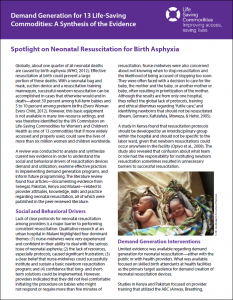Mise au point sur la réanimation néonatale dans l’asphyxie à la naissance
Malgré tout, de nombreux milieux défavorisés ne disposent pas de cet équipement de base de réanimation, qui a été considéré par la Commission sur les produits d’urgence pour les femmes et les enfants des Nations Unies (Commission on Life-Saving Commodities for Women’s and Children’s Health) comme l’un des 13 produits qui, s’ils étaient plus largement accessibles et mieux utilisés, pourraient sauver la vie de plus de six millions de femmes et d’enfants dans le monde.

